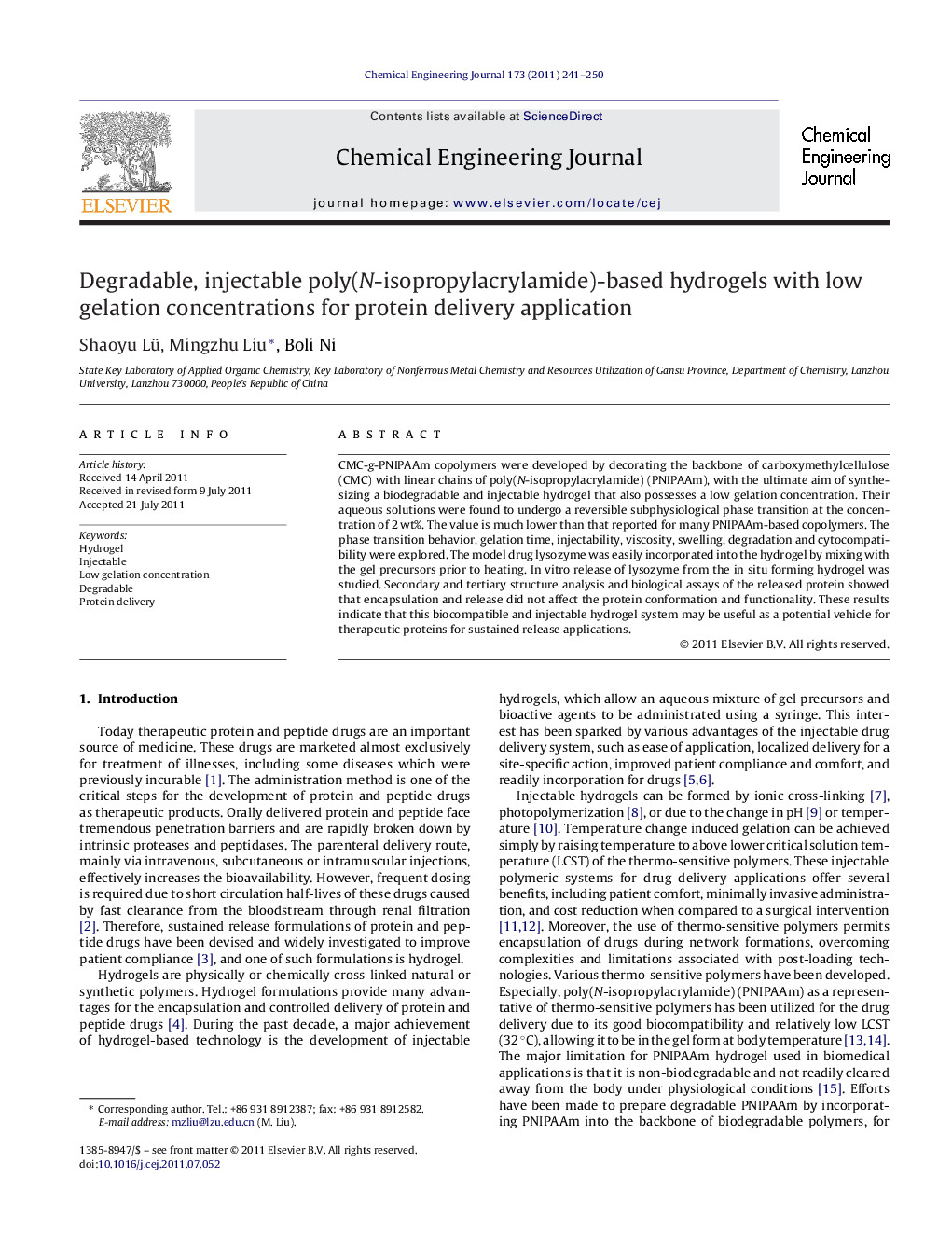| Article ID | Journal | Published Year | Pages | File Type |
|---|---|---|---|---|
| 150659 | Chemical Engineering Journal | 2011 | 10 Pages |
CMC-g-PNIPAAm copolymers were developed by decorating the backbone of carboxymethylcellulose (CMC) with linear chains of poly(N-isopropylacrylamide) (PNIPAAm), with the ultimate aim of synthesizing a biodegradable and injectable hydrogel that also possesses a low gelation concentration. Their aqueous solutions were found to undergo a reversible subphysiological phase transition at the concentration of 2 wt%. The value is much lower than that reported for many PNIPAAm-based copolymers. The phase transition behavior, gelation time, injectability, viscosity, swelling, degradation and cytocompatibility were explored. The model drug lysozyme was easily incorporated into the hydrogel by mixing with the gel precursors prior to heating. In vitro release of lysozyme from the in situ forming hydrogel was studied. Secondary and tertiary structure analysis and biological assays of the released protein showed that encapsulation and release did not affect the protein conformation and functionality. These results indicate that this biocompatible and injectable hydrogel system may be useful as a potential vehicle for therapeutic proteins for sustained release applications.
Graphical abstractFigure optionsDownload full-size imageDownload as PowerPoint slideHighlights► A biodegradable and injectable hydrogel was synthesized. ► The gelation characteristics relevant to physiological applications were studied. ► The hydrogel had a comparatively lower polymer concentration. ► The activity of the proteins was maintained after release.
